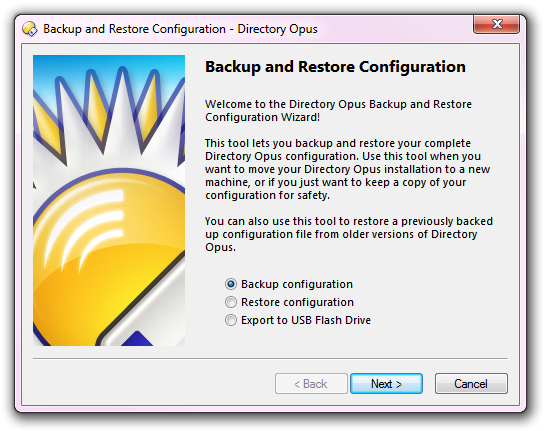
Opus stores its Preferences settings on disk, so backing up your Preferences can be as simple as making a copy of the files / folders in question. However Opus includes an integrated Backup tool that automates this process for you, and results in a single backup file that can be used to restore your Preferences in the event that Opus ever has to be reinstalled. If you ever install Opus on a new computer you can also use this to move your configuration across.

To access the Backup and Restore Configuration dialog, select the option from the File menu in the main Preferences dialog, or from the Settings menu in a Lister.
The three different modes of this dialog are:
As you click through the wizard interface you'll see there are several options available when backing up that determine how much of your configuration is included in the backup. Backup images will include any image files you are using in your configuration, and Backup sounds does the same for any sound files. Backup miscellaneous data will backup data that, while not forming part of your configuration as such, may still be important - things like your File Collections, Libraries and Flickr photoset information for example. Finally, Backup local state data will include data that may really only make sense on the local machine - things like your remembered window positions and so on.
You are also given the option to encrypt the backup file, which you may wish to do to protect things like your stored FTP site passwords.
The same options (images, sounds, miscellaneous data and local state data) are also available when restoring a previously backed up configuration, as well as the Replace existing configuration completely option. If this option is not selected, the configuration you restore will be "merged" with your current configuration - if selected, the option causes Opus to delete your existing configuration before restoring the new one.